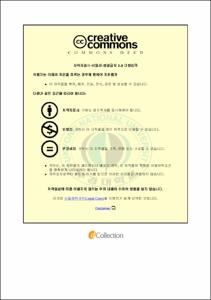Evaluation and Analysis of Hazards in Seaweed Processing Facility
- Abstract
- This study was undertaken to investigate the physicochemical water quality parameters and bacteriological levels of seawater from seaweed aquaculture farms. Inaddition seawater, fresh water and laver used for a dried-laver processing product in dried-laver processing facilities were also investigate for physicochemical water quality parameters and bacteriological levels. The objective of this study was to evaluate and analyze hazards in seaweed processing facilities, specially dried-laver facilities. In this study, samples were collected from seven dried-laver processing facilities. Most probable number (MPN) and pour plate method were used to obtain bacterial levels including total coliforms, fecal coliforms and total viable cell count (TVC). Inductively coupled plasma-mass spectrometer (ICP/MS) and aerobic algar plate (NA) were applied to obtain heavy meatals and airborne bacteriological levels, respectiviely. The results obtained in this study indicate that the bacteriological quality levels of seawater from laver aquaculture farms were <18 MPN per 100mL for fecal coliforms bacteria and seawater used as treatment in some of dried-laver processing facilities were contaminated with total coliforms and fecal coliforms ranging from <1.8 to 170 MPN per 100 mL. Moreover, based on the analysis of physicochemical parameters and bacteriological experiment, some fresh water used in dried-laver processing facilities were revealed to be improper for food processing. It was observed that the water was determined to possess the high levels of chloride (Cl-) ranging from 384 to 1,375 mg per L from five facilities and the hardness was 1,195 mg and 1,197 mg per L from two factories. TVC was defined that most of dried-laver processing facilities were associated with high levels of microbial load and commonly increased up to 107 CFU per g, in the final processed product results indicated that all dried-laver products were associated with the bacterial load of over 105 CFU per g. The load of total coliforms increased as the processing steps progressed. These results are consistent with the results from TVC, which also increase in the process. However, fecal colifoms were not dectected in all final products, eventhough some of samples collected during the processing steps were contaiminated by fecal coliforms ranging from <18 MPN to 170 MPN per g. Arsenic (As) content was ranged from 30.18 to 39.05 mg per kg of dried mass, mercury (Hg) was 0.005 to 0.009 mg, and cadmium (Cd) was from 0.076 to 0.318 mg, respectively. However, lead (Pb) was none detected in all samples tested in this study.
- Issued Date
- 2014
- Awarded Date
- 2014. 2
- Type
- Dissertation
- Publisher
- 부경대학교
- Affiliation
- 글로벌수산대학원
- Department
- 글로벌수산대학원 국제수산과학협동과정
- Advisor
- 김영목
- Table Of Contents
- Tables of contents i
List of figures iii
List of tables iv
Abbreviation v
Abstract vii
Introduction 1
Materials and Methods 5
1. Sampling location 5
2. Information on dried-laver processing facilities 6
3. Plant sample 7
4. Experimental design 7
4.1. Raw laver from aquaculture farms and its preparation 7
4.2. Water quality 8
4.3. Raw laver samples from aquaculture farms 8
4.4. Samples from dried-laver processing facilities 9
4.5. Air quality in dried-laver processing facilities 11
5. Bacteriological experiments 11
5.1. Most probable number 11
5.2. Total viable cell count using standard plate count 12
Results and Discussion 18
1. Water quality in laver aquaculture farms and dried-laver processing facilities 18
1.1. Physicochemical properties of seawater in laver aquaculture farms 18
1.2. Bacteriological analysis of water in aquaculture farms 20
1.3. Anaysis of physicochemical and bacteriological hazards of seawater used indried-laver processing facilities 22
1.4. Analysis of physicochemical and bacteriological hazads in fresh water used in dried-laver processing facilities 25
2. Anaysis of bacteriological hazards in dried-laver processing facilities 33
3. Air quality 40
4. Heavy metals content in final product of dried-laver 43
Acknowledgement 47
Literature Cites 48
- Degree
- Master
- Appears in Collections:
- 글로벌수산대학원 > 국제수산과학협동과정
- Files in This Item:
-
-
Download
 Evaluation and Analysis of Hazards in Seaweed Processing Facility.pdf
기타 데이터 / 781.61 kB / Adobe PDF
Evaluation and Analysis of Hazards in Seaweed Processing Facility.pdf
기타 데이터 / 781.61 kB / Adobe PDF
-
Items in Repository are protected by copyright, with all rights reserved, unless otherwise indicated.